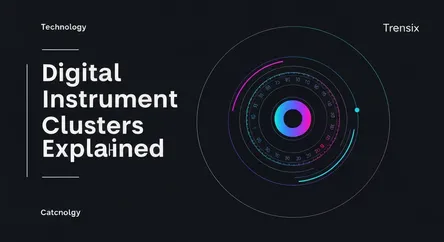Technology
Digital Instrument Clusters Explained

Discover how digital instrument clusters are replacing analog gauges, offering customizable displays and advanced driver information right in your line of sight.
What is it?
A digital instrument cluster, often called a digital dashboard or virtual cockpit, is a fully digital screen that replaces the traditional analog gauges (like the speedometer and tachometer) behind a car's steering wheel. Instead of physical needles and dials, it uses a high-resolution LCD or OLED display to present vehicle information. This allows for dynamic and customizable layouts, showing not just speed and RPM, but also turn-by-turn navigation, media playback, driver-assistance system alerts, and detailed vehicle diagnostics in a clear, graphical format.
Why is it trending?
The trend is driven by the demand for more integrated and tech-forward vehicle interiors. Digital clusters offer superior flexibility compared to fixed analog gauges. Manufacturers can easily update software to add new features and change visual themes, creating a modern, premium feel even in non-luxury cars. The falling cost of high-quality displays has made them more accessible, while their ability to seamlessly integrate with advanced driver-assistance systems (ADAS) and infotainment makes them a central component of the modern connected car.
How does it affect people?
For drivers, digital clusters enhance both safety and convenience. By placing crucial information like navigation maps and safety alerts directly in the driver's line of sight, they reduce the need to look away from the road. The ability to customize the display allows drivers to prioritize the information most important to them, creating a more personalized and less cluttered driving experience. This results in a more informed, intuitive, and focused interaction between the driver and the vehicle, ultimately making driving easier and safer.